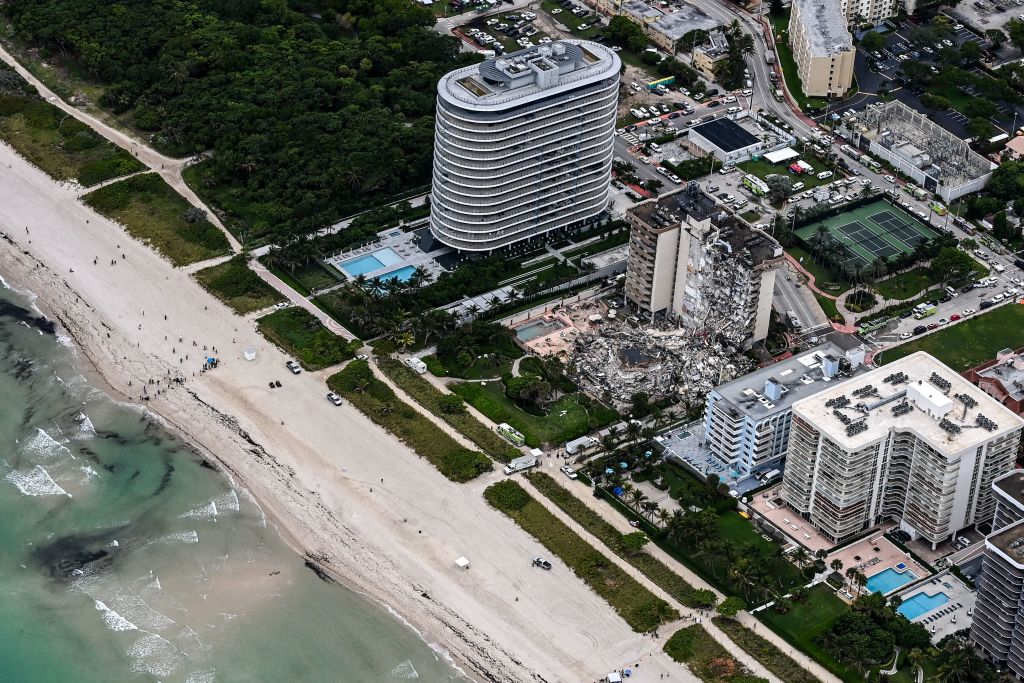Nothing could be more predictable than media coverage of the catastrophic building collapse in Surfside, Florida. Cable news will feature it because the story is both shocking and eye-catching.
Their obvious problem is that the cable channels have hours of air-time to fill and precious little real information, beyond dreadful pictures and interviews with bereaved friends and family and others who escaped the tragedy.
To save hours of watching this low-information disaster footage, the best thing is to read the story on your favorite website and watch very little TV. That is true of every breaking-news news story where real information is scarce at first. Except for seeing what the building looked like and watching the interviews (if you like that sort of thing), the TV coverage is a waste of time.
Here is how the coverage will unfold.
The building-collapse story will lead every cable news hour for the next two days. Initially, it will fill most of the hour. The reporters’ basic message will be, ‘There is so much we still don’t know.’ Video of the building will play in the background. This commentary will be repeated endlessly, along with updated figures on the numbers of dead, hospitalized and missing. If anybody has cell phone video, we’ll see it. Footage from near street cameras is already being shown.
For the next several days, the focus will be on search and rescue, interviews with anguished relatives of the missing and dead and comments from more fortunate people who narrowly escaped. Some of them lived in apartments in other parts of the building. Some, by chance, didn’t go to the building that day. Nearby neighbors will say they heard a terrible sound, then silence. We will hear from first-responders about their painful jobs. We will see footage of heavy machinery removing concrete. After two days, these reports will turn to the sad task of recovering the bodies of those killed. Several days later, we will begin to see reports about the funerals.
These human-interest stories will continue for the next week or more. Most will be heart-wrenching memories of friends and loved ones, interspersed with occasional stories about people who escaped the destruction. It is all unspeakably sad, all those lives cut short in an instant.
Starting on day two, we will see increasing focus on why the collapse happened. Again, cable news won’t really know anything, so they will keep showing pictures and try to find some engineers willing to speculate. Class-action lawyers will begin circling the cameras, wringing their hands, sounding very angry and hoping to line up clients. Back in the studio, other lawyers will say predictable things about who is legally liable.
The most substantial inquiry will be the state of Florida’s, which will start by checking records to see if the building — or any by the same owner or construction company — had inspection issues. Those will either be leaked to the press or reported at press conferences with the mayor, police chief, sheriff, or governor. The state of Florida will undoubtedly ask for an in-depth report by forensic engineers to see if the problem was bad design, bad steel rebars, bad concrete, or something else. Class-action lawyers will do the same, once those suits begin.
The state’s forensic report will take months but the state needs some vital information quickly so it can begin inspecting other buildings, starting with the most vulnerable. Should they focus on buildings by the same construction company or architects or perhaps the same materials? Cable and print media will speculate but probably won’t have much hard information. That won’t stop the prattle.
By day three or four, perhaps earlier, the media and political adversaries will start pointing fingers. The key figure here is Florida’s Republican governor, Ron DeSantis, who could run for president in 2024. He is currently considered a leading candidate because his state is gaining people, growing economically and performed so well during the pandemic, especially because of DeSantis’s attention to nursing homes.
CNN, MSNBC and the legacy print media will look for some way to pin the building collapse on DeSantis since he is from the wrong party and could run against their favorite party in three years. If they can’t find a plausible way to pin the collapse directly on him, they will try the next best thing. They will declare that Florida, like all Republican states, does far too little to protect public safety. This building collapse, they will say, is just another example. ‘That’s the real scandal here.’ In rebuttal, Fox and the New York Post will say Gov. DeSantis is not responsible in any way, that his efforts after the disaster are a model for the nation and that we should all hope our children grow up to be just like Ron DeSantis. It will all sound very stupid.
Save yourself some time. If you spend a few minutes a day reading the story on your favorite news site, you can avoid the endless noise and find out the real information about this tragedy.
Charles Lipson is the Peter B. Ritzma professor of political science emeritus at the University of Chicago, where he founded the Program on International Politics, Economics and Security.

























